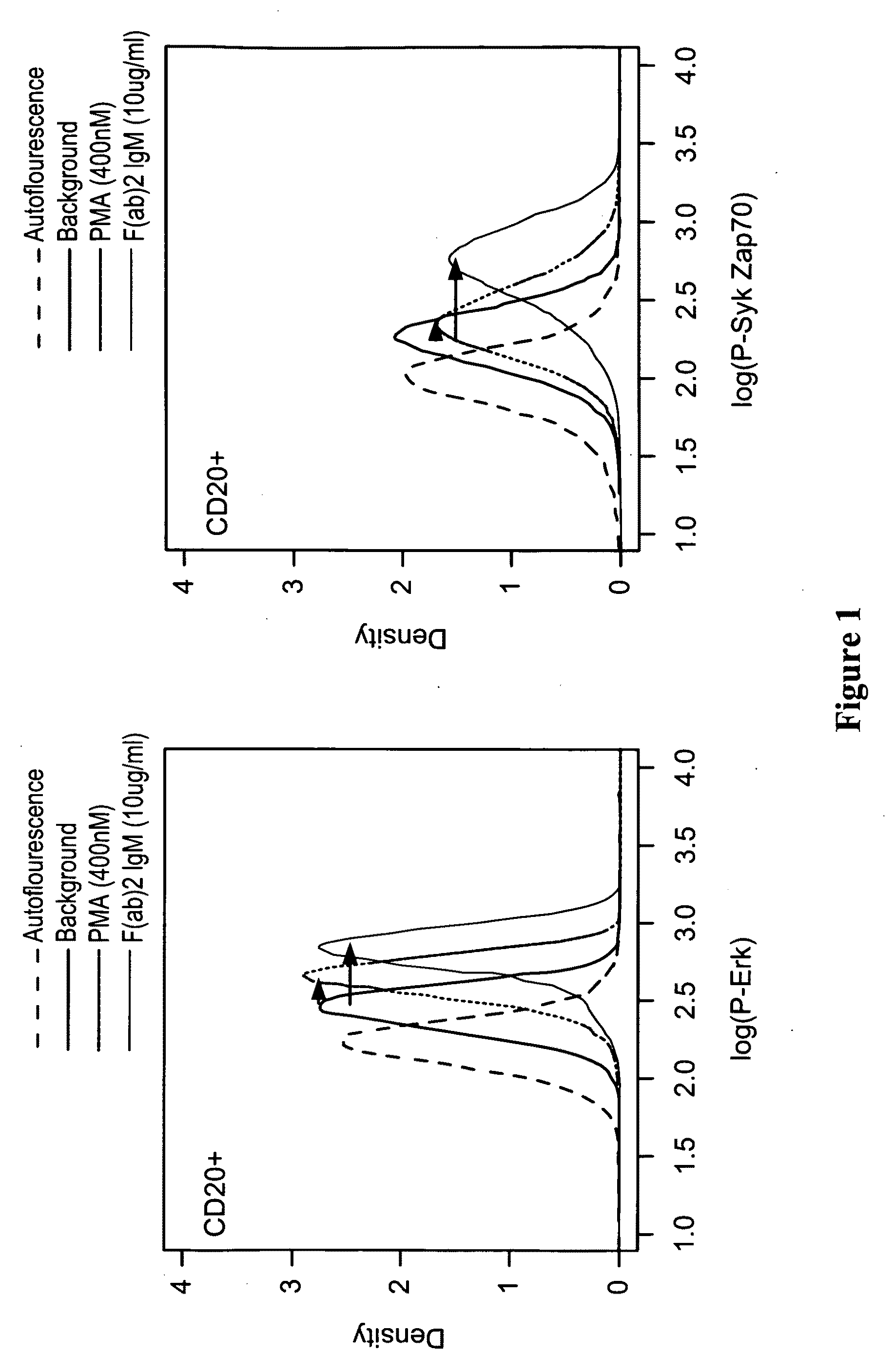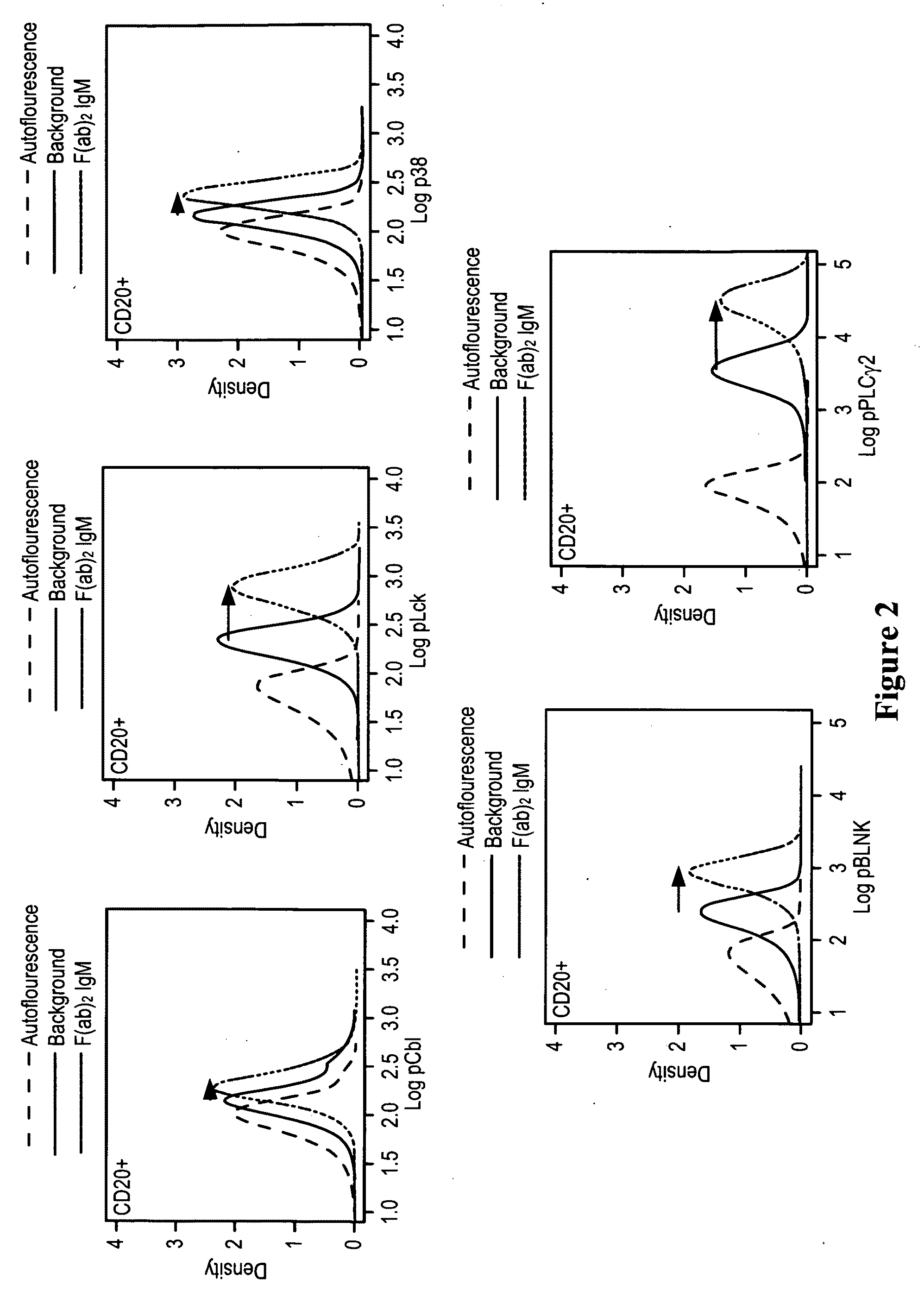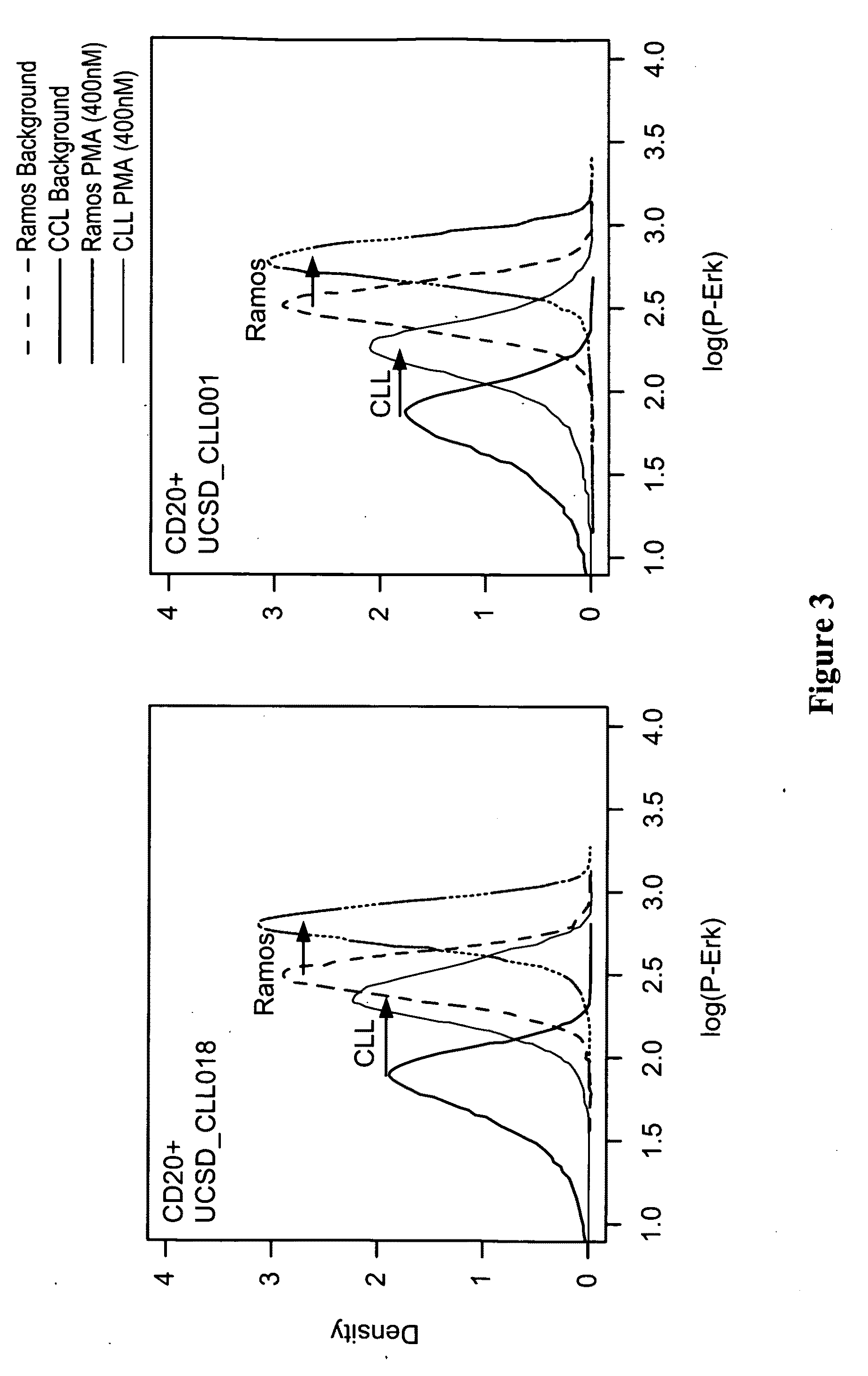Methods for diagnosis prognosis and methods of treatment
a diagnostic prognosis and treatment technology, applied in the field of diagnostic prognosis and treatment methods, can solve the problems of short survival time of patients resistant to therapy, inability to accurately identify and inability to accurately diagnose the molecular events underlying these transformations
- Summary
- Abstract
- Description
- Claims
- Application Information
AI Technical Summary
Benefits of technology
Problems solved by technology
Method used
Image
Examples
example 1
Signaling Pathways in CLL Samples
[0337]Signals propagated through the B cell receptor (BCR) guide the maturation and survival of B cells and might factor in the pathogenesis and progression of chronic lymphocytic leukemia (CLL). In this example, BCR signaling in CLL cells was investigated at the single-cell level using multiparametric flow cytometry. Concurrent analysis was performed using fluorochrome-conjugated antibodies specific for B-cell surface antigens and a panel of antibodies recognizing specific phospho-peptide epitopes within a selected group of intracellular signaling proteins. CLL samples from patients (N=6) showed weak or minimal signaling activity at p72SYK / p70ZAP, Erk1 / 2, B-Cell linker protein (BLNK) and phospholipase-Cγ-2, (PLCγ2) when stimulated only at the BCR with anti-μ crosslinking, whereas a robust signal was observed in a control Ramos B cell line. The low-level signaling in CLL cells could be accounted for by either a defect in activation of a key protein r...
example 2
CLL Patients Display Distinguishable Patterns
[0368]Isolation, storage, thawing, and equilibration of primary cells. PBMC were isolated using density gradient separation (Ficoll-Paque Plus; Amersham Biosciences). In some embodiments, PBMC were pelleted by low-speed centrifugation, resuspended in medium composed of 90% FCS (HyClone)+10% DMSO (Sigma-Aldrich), frozen slowly in the vapor phase of liquid nitrogen in multiple cryotubes, and stored in liquid nitrogen. For signaling analysis of frozen samples, an individual cryotube was thawed into 5 ml of RMPI +1% serum, counted, pelleted, and resuspended at 3.3×106 cells / ml. Thawed PBMC were allowed to rest at 37° C. in a CO2 incubator for 2 h before stimulation.
Modulation
[0369]At least half an hour before stimulation, 300 μl of medium containing 1×106 PBMC was aliquoted into flow cytometry tubes (Falcon 2052; BD Biosciences) and allowed to rest at 37° C. in a CO2 incubator. Cross-linking of B cell receptors was achieved using goat polyclo...
example 3
Evaluation of Apoptosis Pathways in CLL Patient Samples
[0373]Current therapeutic approaches for CLL involve fludarabine-based regimens combined with monoclonal antibodies such as rituximab. Fludarabine, a purine analog, inhibits DNA synthesis by interfering with ribonucleotide reductase and DNA polymerase. Rituximab is a chimeric CD20 specific antibody and has mechanistically been shown to bind complement, induce antibody-dependent cellular cytotoxicity (ADCC) and, in some situations, rituximab binding to CD20 inhibits proliferation and induces cellular apoptosis (for a discussion of apoptosis see U.S. Ser. No. 61 / 085,789).
[0374]Cellular apoptosis in response to therapeutic agents, including but not limited to, DNA damaging agents such as Fludarabine or biological agents such as Rituximab, can be measured by multiparameter flow cytometry using fluorophore-conjugated antibodies that recognize intracellular protein components or nodes of the apoptotic machinery. Such nodes may include...
PUM
 Login to View More
Login to View More Abstract
Description
Claims
Application Information
 Login to View More
Login to View More - R&D
- Intellectual Property
- Life Sciences
- Materials
- Tech Scout
- Unparalleled Data Quality
- Higher Quality Content
- 60% Fewer Hallucinations
Browse by: Latest US Patents, China's latest patents, Technical Efficacy Thesaurus, Application Domain, Technology Topic, Popular Technical Reports.
© 2025 PatSnap. All rights reserved.Legal|Privacy policy|Modern Slavery Act Transparency Statement|Sitemap|About US| Contact US: help@patsnap.com



